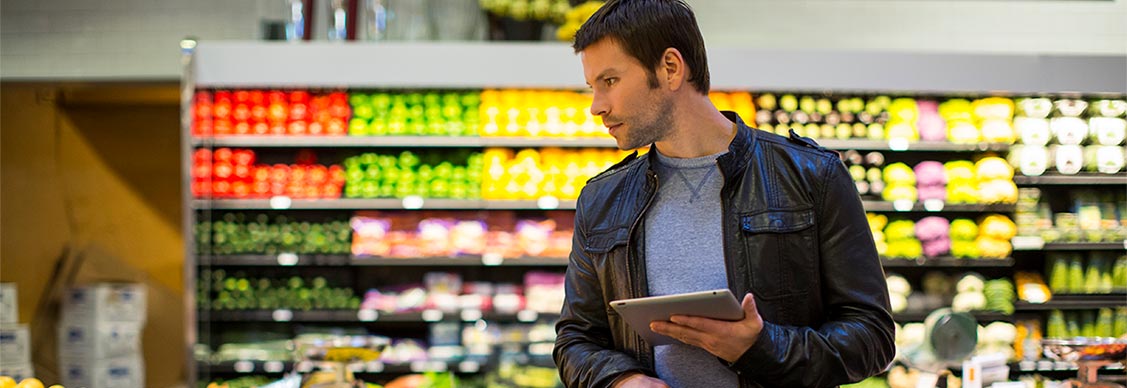How grocery shopping is going high tech
Cashier-less supermarkets are a sign of the times as retailers turn to self-shopping tech
From handheld scanners to robotic shopping carts, new technologies are reshaping how people pay at the grocery store.
Portuguese grocer Continente has opened its first cashier-less store, while Lifvs continues to open unstaffed stores across Sweden. In the Netherlands, Albert Heijn plans to roll-out its “to go” store to at least 100 locations.
The technologies at each store can vary, but self-shopping is at the centre of innovation. For instance, handheld scanners allow customers to scan barcodes as they move around the supermarket, essentially paying as they shop. Smartphone shopping apps – especially popular in the U.S. – are being used for reward schemes and to redeem coupons.
Then there’s the robots. At Walmart in the U.S., automonous Alphabot shopping carts do the work, buzzing around stores to retrieve orders.
“Grocery retailers have been moving in this direction for a while, but the pandemic pushed the pause button,” says Tjard Martinus, head of EMEA retail research at JLL. “Most supermarkets have been absorbing the extra costs of COVID-19 measures. That may have temporarily restricted chains from investing capital in new tech.
“But grocery technology is back on the cards.”
As markets recover, grocery retailers are now re-evaluating plans they may have put on hold or delayed.
Costs and space
In the past, one of the hurdles has been cost. But smartphone apps and handheld scanners are appearing to be relatively affordable and scalable, says Martinus.
The reasons behind supermarkets installing new tech also often come down to efficiency of space – and a falling cost of technology comes as grocery retailers are being pressured to do more with their real estate.
“For grocery operators, a lot of the space currently used for payment is not generating revenue,” says Martinus. “To go fully cashier-less is an increasingly common strategy – but it has to be part of a wider rethink of existing floor space, with issues such as online picking from supermarkets and customer collection options all factors, too.”
Technology also needs to be easy enough for all customers to embrace, he adds, when human interaction is often valued in some countries more than in others.
Looking for more insights? Never miss an update.
The latest news, insights and opportunities from global commercial real estate markets straight to your inbox.
Pricing and big data
It’s not just about space. It’s also about learning more about customer behaviour with improved data analytics.
“Smartphone and handheld payment options provide a great opportunity to improve stock and pricing analysis,” says Martinus, pointing to Kroger’s use of digital shelves in the U.S. The technology interacts with shoppers’ smartphones to alert them when an item on their shopping list is available in the aisle in which they’re standing.
In Europe, the U.K.’s Tesco and French grocery chain Carrefour have been using customer insight to maximise performance and cut prices.
“More accurate data helps supermarkets enhance the customer experience – chiefly through better stock management – which in recent months has been a high-focus area,” he says.
It’s early days for such technologies at many supermarket chains. But wider adoption may fall first to the more premium grocery chains, Martinus says.
“They are expected to provide more for their customers,” he says. “For any supermarket, the key question is if enough sales can switch over to support this and make it work, and crucially help distinguish their respective shopping experience from that of its peers.”
